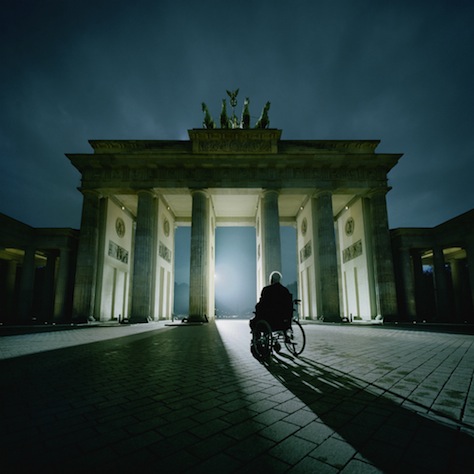 Photo credit to Andreas Mühe/VG Bild-Kunst Bonn for BILD.
Photo credit to Andreas Mühe/VG Bild-Kunst Bonn for BILD.
This is perhaps the most haunting photo in world politics in 2014.![]()
Helmut Kohl, who was first elected chancellor of West Germany in 1982 and who left office in 1998 following his final term as the chancellor of a reunified Germany, is today long out of frontline politics and, since a 2008 stroke, has been confined to a wheelchair. He sits alone in this photo for Bild at night in the glow of the Brandenburg Gate, one of many points that divided East Berlin from West Berlin for the better part of 28 years.
It’s astonishing that, with Sunday’s 25th anniversary of the fall of the Berlin Wall, which ultimately resulted in the reunification of Germany and became a harbinger of the collapse of the Soviet Union, we’ve almost reached the point where the Berlin Wall has been down longer than it initially stood.
Even as Mikhail Gorbachev, still around as an icon of the revolutionary change of that era (and despised, to this day, in Russia), is warning that Ukraine could spur a new 21st century cold war, Sunday was an opportunity to celebrate the universal desire for freedom. That was as true in 1989 as it is in 2014, when many walls still remain, from Gaza to China’s ‘great firewall.’
For Germany, the reunification of East and West has been very successful in some ways, others not. It’s almost comical today to imagine British prime minister Margaret Thatcher telephoning Gorbachev, frantically and practically begging him to stop German reunification. But when we think about the chiefly German-led European Union of 2014, with its emphasis on tight budgets (instead of GDP and jobs growth) and its peculiarly German reticence as regards debt and inflation (even in the face of growing deflationary pressure), there may have been something to Thatcher’s warnings, after all. Ulrich Beck captures the peculiar problem of German Europe in a new short book, translated earlier this summer into English.
* * * * *
RELATED: Has the first Ossi chancellor been good or bad
for the former East Germany?
* * * * *
German reunification is itself something of a cautionary tale about the perils of implementing a currency union in what, in 1990, was most certainly not an optimal currency zone. Though the past 25 years haven’t been horrific for the six eastern German states that once constituted the German Democratic Republic, it’s hard to say that the former GDR has done better than Poland or other former ‘Iron Curtain’ countries. That, in part, may have been due to the effects of conversion of East German currency on a 1:1 ratio with the West German deutsche mark.
Continue reading Photo of the day: Helmut Kohl at Brandenburg Gate